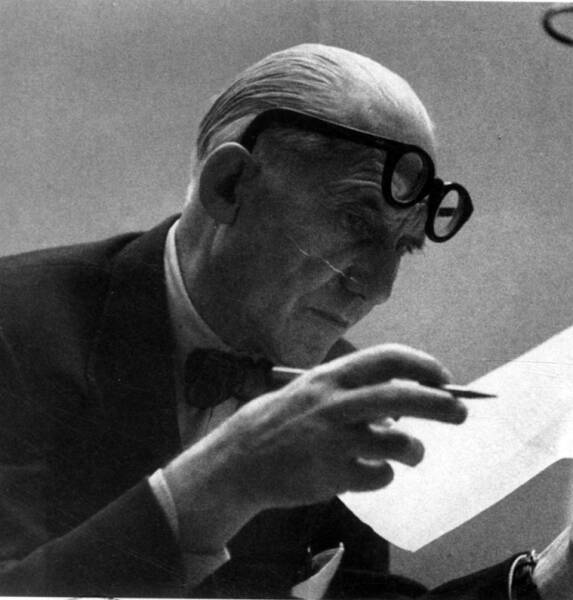Corbusier’s vision for Chandigarh: The genius & the flaws
Conceived at the time of Partition, the need for Chandigarh came from a need to create a new city for Punjab that would hold the promise of creativity and potential. Its scale and site were decided at the national level.
 Le Corbusier and frequent collaborator and fellow architect Pierre Jeanneret. Photo courtesy: Fondation Le Corbusier, Paris; Bonhams website.
Le Corbusier and frequent collaborator and fellow architect Pierre Jeanneret. Photo courtesy: Fondation Le Corbusier, Paris; Bonhams website. The Supreme Court Tuesday directed the Centre and the Chandigarh administration to take a number of steps to preserve Le Corbusier’s Chandigarh.
Corbusier’s Chandigarh wasn’t built in a day. Conceived at the time of Partition, it came from a need to create a new city for Punjab that would hold the potent promise of creativity and potential. Its scale and site were decided at the national level, not at the local administrative level.
In 1949, then Prime Minister Jawaharlal Nehru brought in American architect-planner Albert Mayer and Polish architect Matthew Nowicki to plan a modern city. Mayer and Nowicki envisioned superblocks with green spaces, while being sensitive to the natural gradient of the land and scope for drainage and water.
However, after Nowicki’s death in a plane crash in 1950, Swiss-French architect-planner Le Corbusier was commissioned for the project. While Corbusier stayed close to their early plans, he turned their curving road network into a rectangular grid, with straight lines that would privilege the automobile. However, he was keen on keeping to the “Garden City” idea, where high-rise buildings were unacceptable in commercial areas.
 Sector 22, the first sector to be developed for housing, as it was originally (below), and as it is today. (Express Archive, Jasbir Malhi)
Sector 22, the first sector to be developed for housing, as it was originally (below), and as it is today. (Express Archive, Jasbir Malhi)
Metaphor of a human being
Corbusier’s plan would have a heart and a head, where the “head” would contain the Capital Complex and the “heart” the commercial area. The “hands” would host recreational spaces and academic institutions. His rectangular grid encouraged self-sufficient units, dividing the city into different sectors.
Architect-historian Vikramaditya Prakash in his book Le Corbusier: The Struggle for Modernity in Post-colonial India (University of Washington Press, 2002) mentions, “These residences fell into 13 categories based on the rank and incomes of the government officials who would inhabit them… however, all were unified in their modern, geometric simplicity. The primary visual interest in the otherwise monolithically rectangular buildings came from the deep overhangs and recesses employed for the purpose of shading, along with perforated screens and, in some cases, verandahs.”
His idea of the modern city
This urban idea of a city would fulfill four functions — living, working, movement and recreation, or “care for the body and spirit”. It was an idea presented at the 1933 Athens Charter, formulated by Congress International d’Architecture Modern (CIAM), an organisation that spearheaded the Modern Movement in the world.
 Swiss-French architect Le Corbusier prepared the Master Plan for the city of Chandigarh and contributed specific designs to several buildings
Swiss-French architect Le Corbusier prepared the Master Plan for the city of Chandigarh and contributed specific designs to several buildings
Corbusier had planned for the city to be built in two phases, where Phase I would contain Sectors 1 to 30 for 150,000 people, while Sectors 31-47 would host a denser population, of nearly half a million. To do this, locals were evicted and refugees shown the door. Records claim nearly 28,000 people had to leave the land. The government bought it all under the Land Acquisition Act of 1894, allowing the inhabitants to remain as tenants.
Historian Sunil Khilnani in The Idea of India (Penguin, 2004) writes, “Chandigarh’s radical meaning lay in its unfamiliarity, physically represented in straight roads, the strict grid-iron, vast open spaces, separated land uses, the uniformity of principal components of the city and the use of letters and numbers to name places.”
Therefore, while Chandigarh became home to the wealthy and the government officials, the poor were excluded from Corbusier’s master plan. Critics also mention that besides segregating housing based on income, another flaw was that the wage earners’ location outside city limits made it tedious for them to access jobs. The saying goes that Chandigarh is a well-designed city, not a well-planned city.
- 01
- 02
- 03
- 04
- 05






































